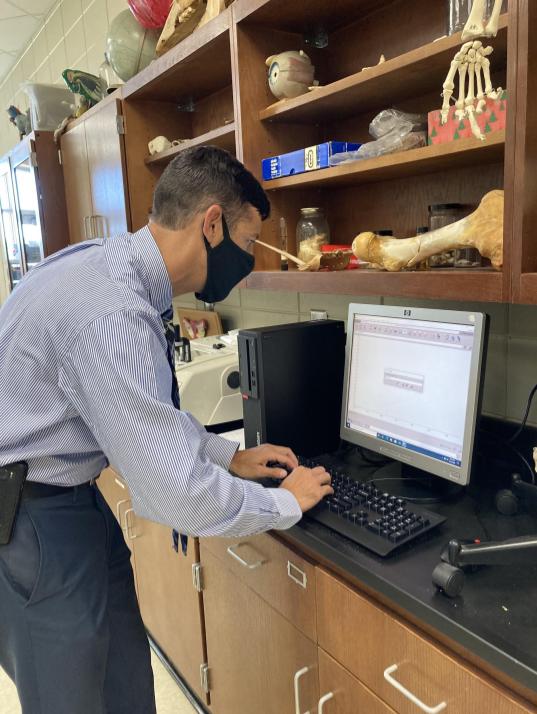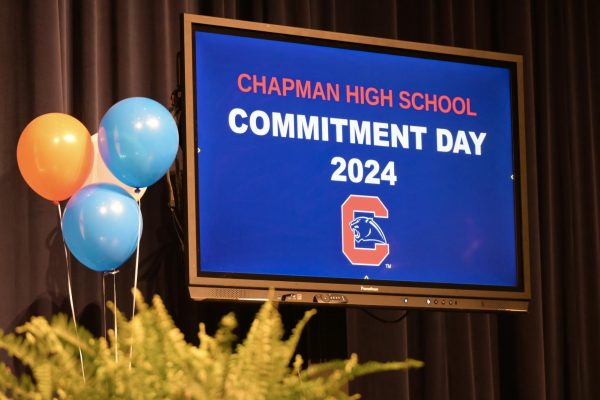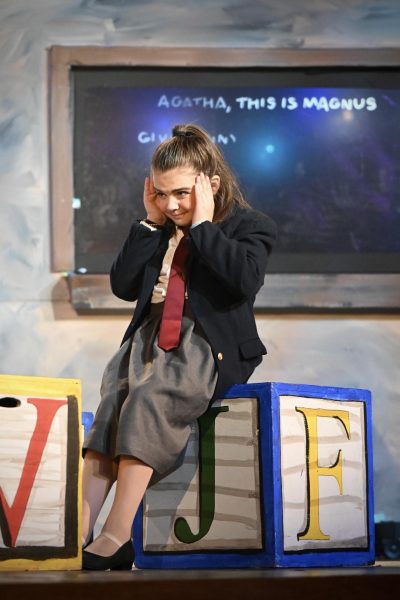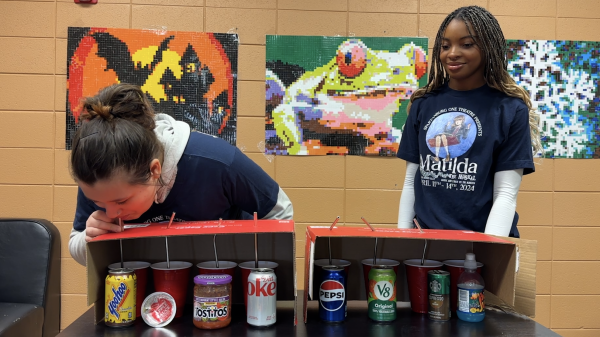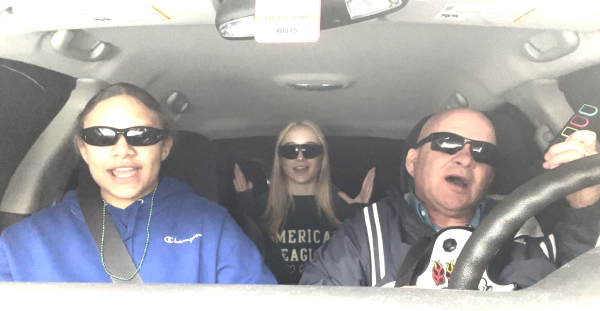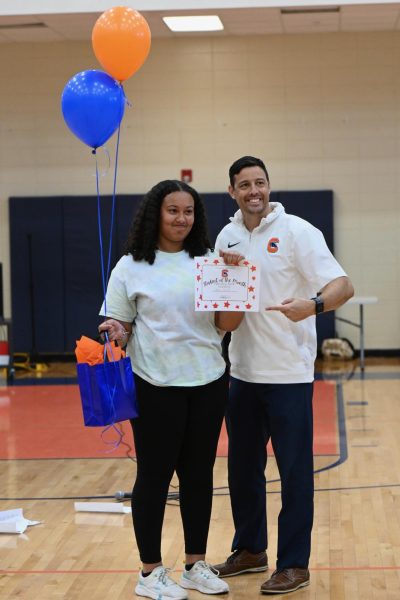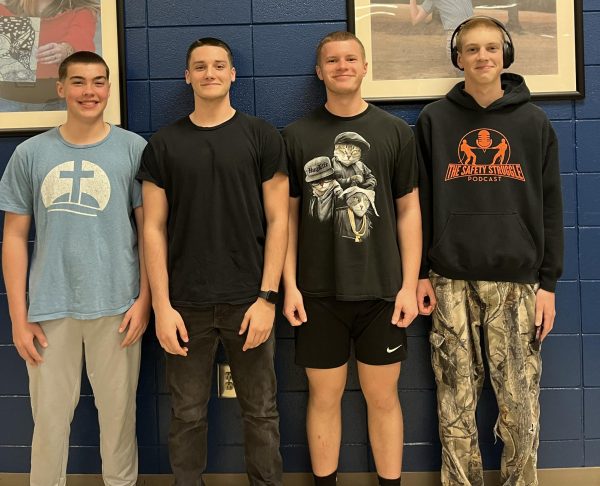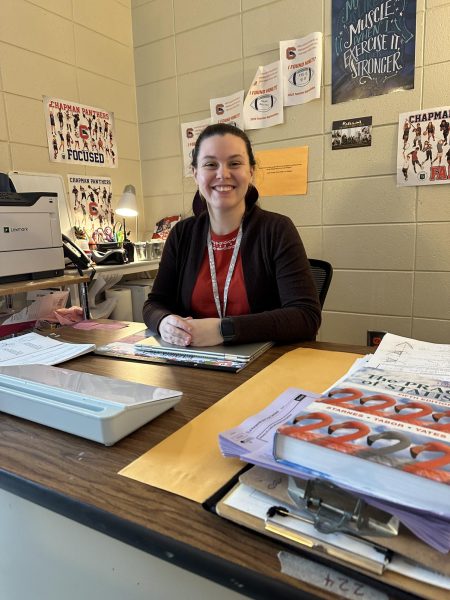Chapman receives FTIR 001 Spectrometer
On Friday, Sept, 11, the Chapman science department received an FTIR (Fourier Transform Infrared) 001 spectrometer from a generous donor, Ashley Harris.
“A friend of mine, and he’s actually got two students on campus, thought about the school and said, ‘Well, can I donate it to the school?’ and they said yeah,” science teacher Matt Davis said. “I’ve seen some schools have some basic spectrometers, but nothing like this.”
According to ATA Scientific, “A spectrometer measures the wavelength and frequency of light, and allows us to identify and analyse the atoms in a sample we place within it.” In other words, by using data of how much light a substance absorbs and reflects, scientists are able to discover what a substance is made up of.
Two Prowl staff members were able to use the FTIR spectrometer to analyze a plastic bag and a piece of laminated paper. The machine first scanned the materials 16 times to run a “background check,” making sure nothing was wrong with either sample.
The substances were then scanned again, and this time, the computer showed a graph of the frequencies of the light waves the substance absorbed. Using that graph, the computer’s database was able to find a match and figure out what the substance was composed of.
“This is kind of physics, chemistry, and biology all rolled up into one,” Davis said. “This thing can be used for forensic science classes, this can be used for chemistry, this can be used for physical science, physics, AP chemistry, AP physics. I’m going to use it in Earth Science probably next week because we’re talking about the wavelengths of light. We can teach the electromagnetic spectrum, but here it is in real life form.”
Access to FTIR spectrometers is extremely rare for public schools because the technology is very expensive.
“My guess is probably between $30,000 and 50,000,” Davis said. “Y’all have never been exposed to this type of technology. I don’t know of anybody in the state that has one of these.”
For teachers, this means adapting their lesson plans to accommodate the now available technology.
“We’ve as teachers got to figure out lesson plans because we’ve never had this to use before,” Davis said. “My goal is for all the staff, all the science teachers, to use this as much as possible.”
Davis was quick to credit the donor of the FTIR spectrometer, as well as the company that allowed the machine to be donated.
“I’m just blessed that someone was able to think about us, and thanks to Contec and Mr. Harris for thinking about us,” Davis said. “You can see the application in it and how awesome it is.”
Your donation will support the student journalists of Chapman High School. Your contribution will allow us to purchase equipment and cover our annual website hosting costs.

